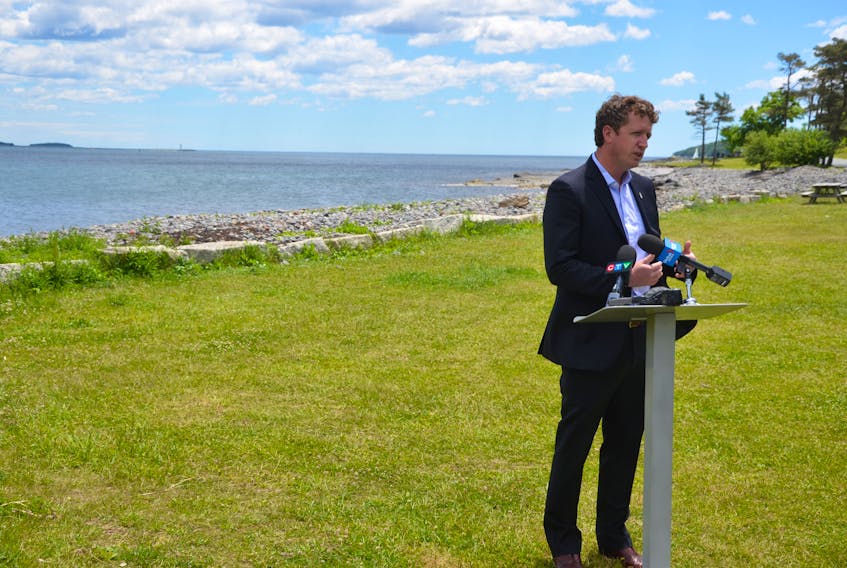Note: Sea levels are rising at a pace unparalleled in modern times and storms are becoming more intense as a result of global warming. This story is part of a weeklong series examining our rising oceans, the impact on our region and what government, scientists and others are doing to track change and mitigate damage.
Click here to read the series.
Climate change is creating a sea of uncertainty.
The sea level is expected to be three-quarters of a metre to more than a metre higher by 2100 than it was a century earlier.
“Large ice shelves are breaking up in Antartica,” said Boris Worm, a marine ecologist at Dalhousie University in Halifax.
“That could have a major impact. That is the reason that the recent projections have been corrected to include a much larger range of possible sea level rise.”
Worm said the National Oceanic Atmospheric Administration of the United States earlier this year projected an extreme sea level rise by the turn of the century of 2.5 metres higher than the year 2000.
With uncertainty rising, the province’s Environment Department announced in late June that it will introduce coastal protection legislation to help mitigate the effects of rising sea level and climate change.
“What we found was happening over a year ago is that there were a mismatch of actions that were being taken in different municipalities,” Environment Minister Margaret Miller said upon her recent return to the department. “Every municipality had a different way of handling their coastlines and where people were allowed to build, where they weren’t and what could go where. What this legislation is going to do is ideally set up a provincial system that will have all these things in place.”
She said the legislation will be primarily directed at potential homeowners, “to make sure that although a bluff one foot above the coast is beautiful and the theory works well, it does not work so well when a storm hits or when we are dealing with rising sea levels. People have to think ahead.”
Nancy Anningson, coastal adaption co-ordinator with the Ecology Action Centre, said the legislation is all about allowing the coast to defend itself.
“What we’re trying to do is protect a very delicate zone,” said Anningson, who took on her EAC role in May.
“The act is going to define that zone. We’re trying to figure out what that is. The coastline is quite different as you travel around the province. In some places, it’s sandy and dunes, some places there are salt water marshes, rocky coasts, steep coastlines that are eroding.”
Anningson said the province will then protect that zone from being developed through a variety of means, including regulations that set developments back from the water’s edge.
“The real crux is trying to actually let the coast do what the coast is supposed to do. Coasts are extremely fluid. They have ways of adapting. Sediment moves around and the vegetation on the shore holds things in place. There are going to be changes, particularly now that we know the sea level is rising as dramatically as it is. If we stay out of the way and we don’t build these giant sea walls that cause massive erosion on either side of them, if we don’t try to stop the coast from doing what it needs to do to adapt, we will be able to withstand what’s happening longer.”
The EAC is offering input and guidance in developing the legislation. The consultation phase with the public and interested groups ended Aug . 17.
Iain Rankin, the former Environment minister, did not offer a timeline for the legislation to be drafted.
“Properties along the coast — our coastal wetlands, salt marshes, dunes — provide an important function,” Rankin said, adding that the natural dynamic has to be protected.
Rankin said the act will fill in the gaps left from existing coast-related legislation.
He said the legislation will determine a specific buffer zone from the coast, where no construction activity will be permitted.
“We’d have to look at the studies from the experts to define what the appropriate distance is,” said Rankin, now the minister of Lands and Forestry.
He said the act will not force changes to development that already exists.
“This act is about the future,” Rankin said. “There is a certain amount of activity that we can’t go back in time and address. This is about making sure that Nova Scotians know we are going down this road to protect them so that they are building in safer areas and activity is happening in a more appropriate place.”









